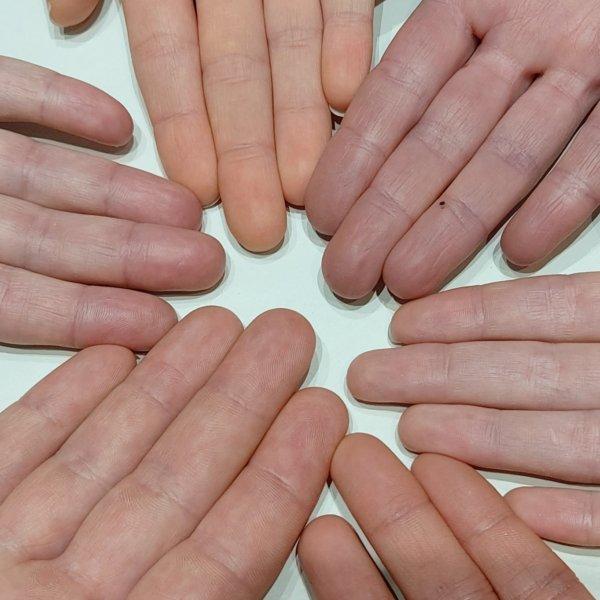New study reveals how unique human fingerprint patterns develop
The interaction between developmental signalling pathways and the anatomy of the human hand contribute to the formation of unique fingerprint patterns.

The mechanisms to produce individually unique and complex human fingerprint patterns have been unknown for decades, despite observations that specific genetic abnormalities can cause an absence of fingerprints (adermatoglyphia).
A research team led by Dr Denis Headon at The Roslin Institute has been working to understand the mystery of finger print patterning for some time. CGEM’s Professor Sara Brown and Dr Luke Johnston became involved to provide expertise in skin cell culture methods. Their findings not only uncover the way in which fingerprints develop in early embryonic life, but also help to explain the variation in pattern that makes human fingerprints unique.
Fingerprints are formed by the complex patterns of epithelial ridges, termed ‘dermatoglyphs’, on the underside of the fingers. It was found that ridge formation and initial patterning in the developing fingers is regulated by similar developmental pathways to early hair follicle formation. At a molecular level, the process is controlled by signalling between EDAR, WNT, and antagonistic BMP pathways.
Human fingerprint patterning was found to begin from a number of variable sites within the finger and expand in waves of molecular patterning throughout the digit. Computational modelling suggested that variations in location, timing and angle of wave initiation, along with the interactions between waves from different sites could underlie the vast variation in fingerprint patterning that is observed.
The study (link below), published recently in Cell entitled ‘The developmental basis of fingerprint pattern formation and variation’ was conducted in collaboration with colleagues from the United Kingdom, Czechia and China.
It was a privilege to be able to help Denis and his team in their work, by sharing expertise in keratinocyte and fibroblast culture techniques from our work in skin organoid modelling. As a dermatologist I am delighted this long-lasting mystery of skin has been solved!
Links
The developmental basis of fingerprint pattern formation and variation (external)


